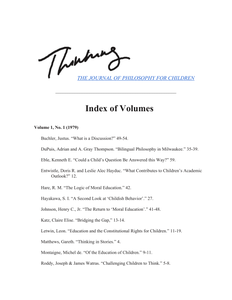With a growing interest in immersive technologies to elevate digital spectating experiences, Virtual Reality (VR) is viewed by many academics and industry actors as the future of esport spectatorship. The majority of the esport fans are the same group that show interest in immersive technologies as VR. This group is, therefore, expected to accept the technology and adopt it in their spectating experience. However, given the fact that this target group is mostly used to utilize interactive VR for gaming purposes, it is not clear how they would experience a passive non-interactive VR experience, and to what extent the technology could contribute to enhancing their viewing experience. This study compared two versions of the same summary recording of the livestream of an esport competition: a 2D version and a VR version: 92 participants watched the esport competition either on a 2D screen or in VR, then they had to answer questions regarding their experience. Compared to 2D, the VR experience scored higher on immersion, presence, social presence, emotional contagion, and enjoyment. This paper confirms the potential of VR to efficiently enhance the digital spectating experiences of esports, while highlighting the need for more research in how to produce the content to best fit VR and increase VR adoption intention.
LINK
Studies into affective publics often involve textual communication. However, emotive communication is increasingly visual. This study zooms in on the representation of the suffering other in seven re-workings of the Alan Kurdi photographs that resonated significantly on Instagram. Chouliaraki’s concept of post-humanitarian solidarity in The Ironic Spectator (2013) is used as a theoretical framework to analyse the content of re-worked images and their post captions. Her concept outlines how distant sufferers tend to be rendered invisible due to the self-reflexive nature of contemporary solidarity. This self-reflexivity gets in the way of solidarity for others unlike us. The study found that, although the sufferer is visually present in almost all re-worked images, the suffering is ‘replaced’ by emotions or political views of the creators. Both Chouliaraki’s ‘distant other’ as well as Markham’s similar other are ways to visually (re)construct the tragedy of Alan Kurdi and the refugee crisis in general. This study adds to this an understanding of how Instagram users, while visually constructing a similar or distant other, also write themselves – often their personal feelings – into such images. Their public, other Instagram users, engages in self-reflexivity by liking such re-workings, aligning with the communicated emotions or political views conveyed. In this way, the platform ‘like feature’ intensifies the self-reflexive nature of contemporary solidarity.
DOCUMENT
DOCUMENT
The journal was a forum for the work of both theorists and practitioners of philosophical practice with children, and published such work in all forms, including philosophical argument and reflection, classroom transcripts, curricula, empirical research, and reports from the field. The journal also maintained a tradition in publishing articles in the hermeneutics of childhood, a field of intersecting disciplines including cultural studies, social history, philosophy, art, literature and psychoanalysis.
DOCUMENT

Breedtesport en topsport ontwikkelen zich in een verschillende richting, maar blijven elkaar beinvloeden. Deze beinvloeding kan worden onderscheiden naar effecten die samenhangen met de veronderstelde aanvoerfunctie van de breedtesport en effecten die voortkomen uit de veronderstelde aanjaagfunctie van de topsport. Beide functies maken onderdeel uit van de zogenoemde 'double pyramid theory'. Volgens deze theorie brengen duizenden sportbeoefenaars een paar Olympische kampioenen voort (aanvoerfunctie), terwijl deze kampioenen door hun rolmodel weer duizenden mensen stimuleren om één of andere vorm van sport te gaan beoefenen (aanjaagfunctie). Onderzoek wijst echter uit dat er geen sprake is van een gelijke mate van beïnvloeding tussen topsport en breedtesport. De topsport kan niet zonder breedtesport, maar andersom is dit in veel mindere mate het geval. Breedtesporters ontlenen vooral als publiek veel plezier aan de topsport, maar een groot deel van de sportbeoefenaars, vooral buiten verenigingsverband, zal in hun sportbeoefening nauwelijks een relatie met de topsport ervaren.
DOCUMENT

Onderzoekers van het MOVES-onderzoeksprogramma hebben een vierde whitepaper uitgebracht. In deze publicatie is de belangrijkste kennis over maatschappelijke effecten van topsportevenementen bij elkaar gebracht. Ook zijn er kennishiaten benoemd die richting geven aan vervolgonderzoek. De thema’s die worden behandeld zijn: sportdeelname, welzijn, sociale cohesie, trots en geluk. Daarnaast is beschreven op welke manier topsportevenementen als hefboom (‘podium’) gebruikt kunnen worden en hoe dat tot impact en legacy kan leiden. Dit whitepaper maakt deel uit van werkpakket 4.
DOCUMENT
